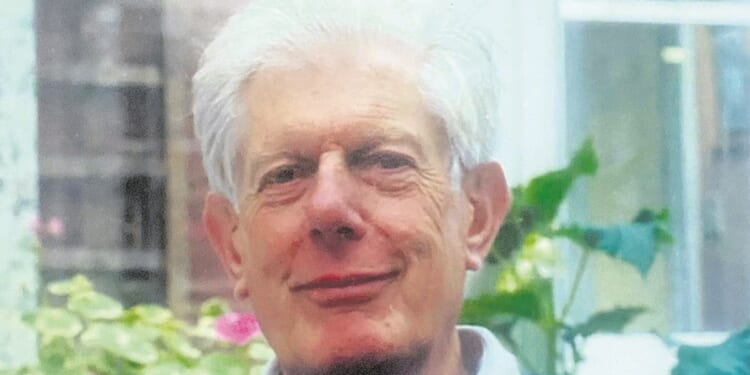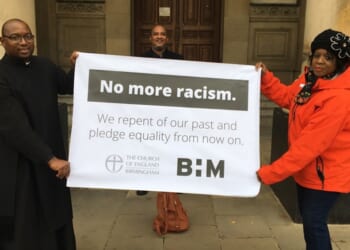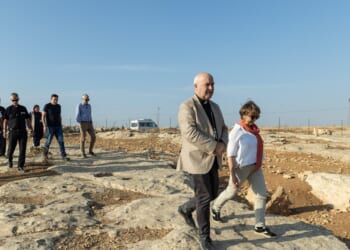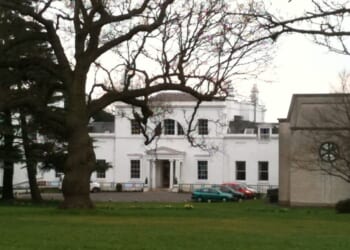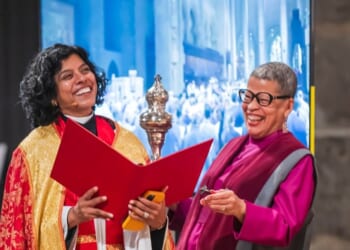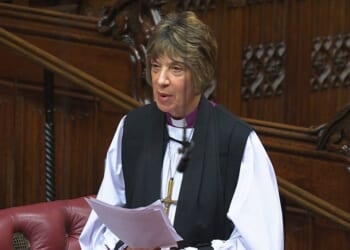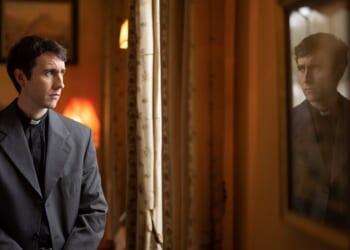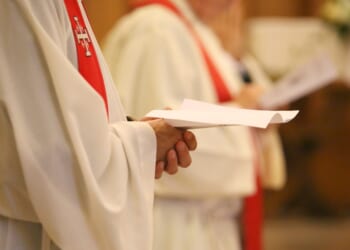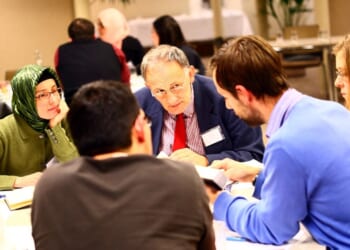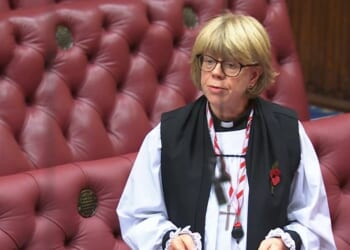Robin Richardson writes:
THE Very Revd the Hon. Hugh Dickinson was, among other things, a parish priest, school and university chaplain, cathedral dean, mystic, exponent and teacher of contemplative prayer, and founder or co-founder of projects and initiatives, including Sarum College, Salisbury, and the Bloxham Project on Christian education.
Hugh Geoffrey Dickinson was born to Richard Willoughby Dickinson DSO, an officer in the UK colonial service, and Nancy Lovemore, an artist. He was a grandson of a Liberal MP, Sir Willoughby Dickinson, who was elevated to the peerage as Lord Dickinson of Painswick in 1930, in recognition of his leadership in the creation of the League of Nations after the First World War, and for his advocacy and campaigns over many years for the suffrage of women. In 1944, Hugh was granted the rank of a baron’s younger son.
Hugh was born in Zambia, known in colonial times as Northern Rhodesia. The family returned to England in 1934, but, sadly, his father died the following year, and Hugh’s consequent profound grief continued for many years to come.
He was educated at Westminster School, and at Trinity College, Oxford, where he was much influenced and inspired by Austin Farrer. He trained at Cuddesdon, to serve his title at St Michael’s, Melksham, in Wiltshire, before becoming chaplain at Trinity College, Cambridge (1958-63). Here, he published an article that was extremely critical of what he called public-school religion, namely the kind of education provided by chapels and chaplains, with its customs and ceremonies, in the schools from which most Trinity undergraduates in those days came.
As a direct consequence, he was invited and challenged by Sir Desmond Lee, then headmaster of Winchester College, to become a school chaplain himself. He accepted, and, at Winchester, he put into practice the radically reformed vision of Christian education for which he had argued. In 1967, he gave the keynote address at a national conference for school chaplains held at Bloxham School, in Oxfordshire. This led directly to the creation of the Bloxham Project Research Unit, whose first big report, Images of Life: Problems of human relations and religious belief in schools, was published by SCM Press in 1973.
Hugh and his wife, Jean, whom he had married in 1963, had moved to Coventry, where he had been appointed diocesan adviser for adult education and Priest-in-Charge of St James the Great, Old Milverton (1969-77). Both here and as Vicar of St Michael’s, St Albans (1977-86), he developed further his commitment to contemplative prayer and to grounding the spiritual life not only in prayer but also in human relationships and group dynamics in the customs and norms of complex organisations.
He became Dean of Salisbury in 1986. His colleagues recall him as “warm, undefended, grounded, and fun”. His many achievements included educational and cultural involvement of the cathedral in secular life, and increasing the inclusion of women and girls in diocesan affairs and structures. It was during his tenure, in 1991, that Salisbury Cathedral Girls’ Choir was founded.
In 1995, Hugh was heavily involved in the foundation of Sarum College. Nearly 30 years later, his last lecture for Sarum closed with an iteration of his lifelong emphasis on stillness and contemplation.
After retirement in 1996, Hugh was an assistant priest at St John the Baptist, Cirencester. Here, he wrote and published two books of theological essays (The Wound of Love and Christianity — A primer for the perplexed), two novellas exploring, respectively, the life of Jesus before his baptism (Made Flesh) and the life and influence of St John (I Am with You), and a collection of poems (Towards Evening) about his own longings, angsts, torments, epiphanies, and resolutions over his life.
In these publications, and in other articles, sermons, lectures, and correspondence, he paid increasing tribute to Julian of Norwich, and to the philosophical work of Iain McGilchrist, who had been a pupil at Winchester College during Hugh’s time as chaplain there.
In all his publications and preaching, Hugh acknowledged the distinctive biases of his own location and territory in time and global space — “elderly, white, middle class, Anglo-Saxon, 21st century, Brit”.
Back in the early 1980s, Hugh had been one of the principal contributors to a Bloxham Project report, Heirs and Rebels: Principles and practicalities in Christian education. The main title had been inspired by Gilbert Murray, who had said that a person who “‘possesses real vitality can be seen as the resultant of two forces . . . first, the child of a particular age, society, and convention, what we may call in one word a tradition . . . second, in one way or another, a rebel against that tradition”. In one of his chapters in the report, Hugh illustrated the heir/rebel distinction in relation to two imaginary young people.
Hugh’s novella Made Flesh was ostensibly a piece of fiction and imagination. But, it may be suspected that the one detailed and remarkable quotation of a child’s mystical experience was autobiographical, recording and recognising a formative experience in Hugh’s own personal memory, perennial and vital, creative and inspiring.
Throughout his life, experiences and memories of Hugh have been blessings for many others, and such memories will continue to be blessings for many years and decades and ages into the future, “enfolded in an invisible glory”.
Hugh died on 30 July. He is survived by his children, Tess and Ben, and four grandchildren, Josh, Kate, Rosie, and William.

